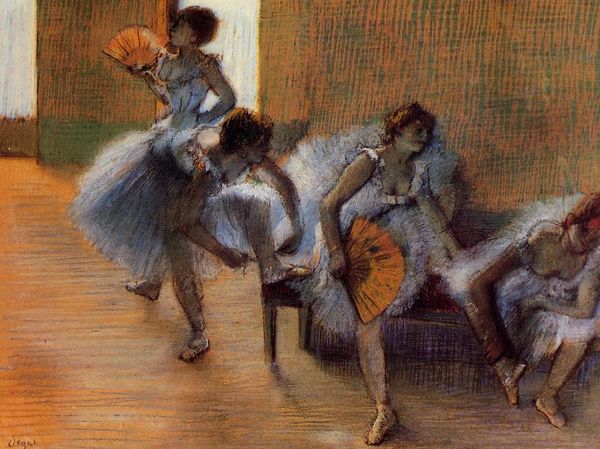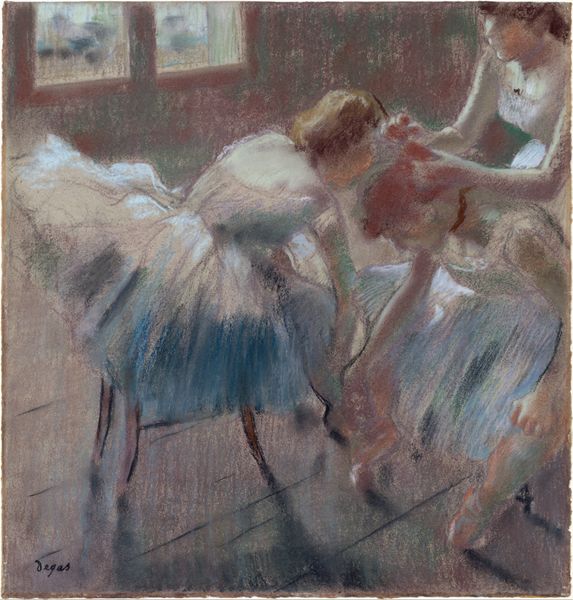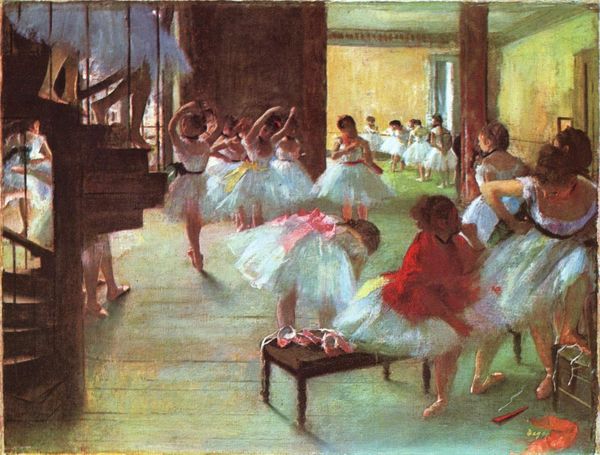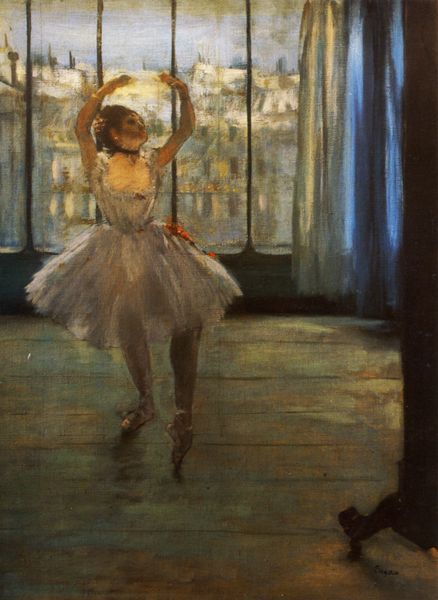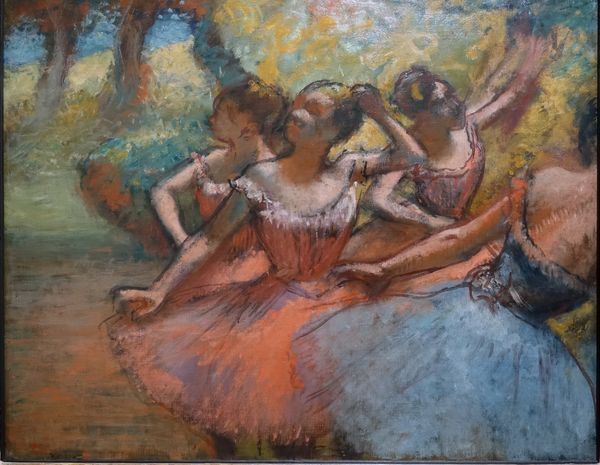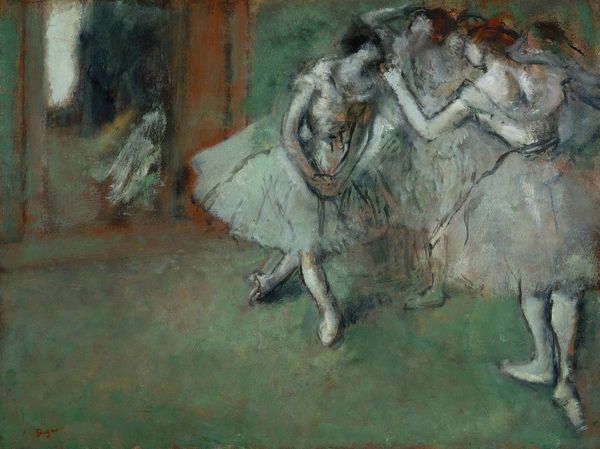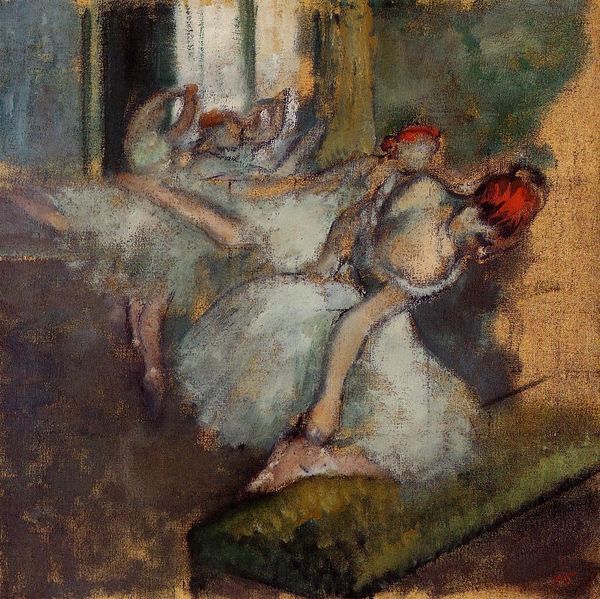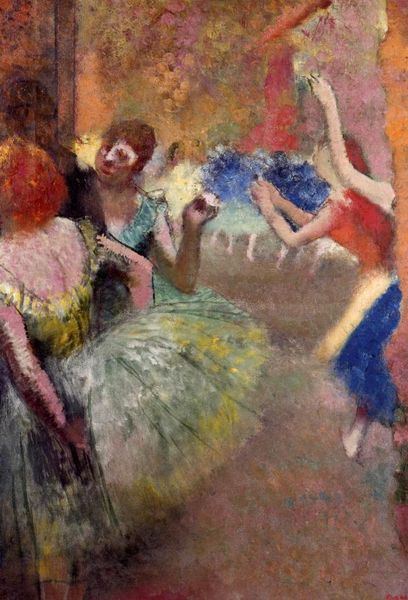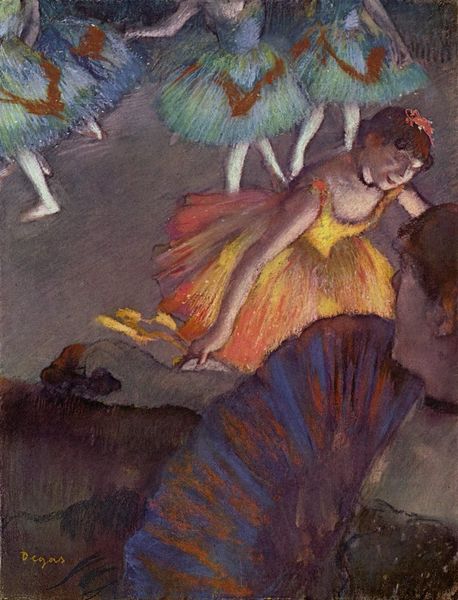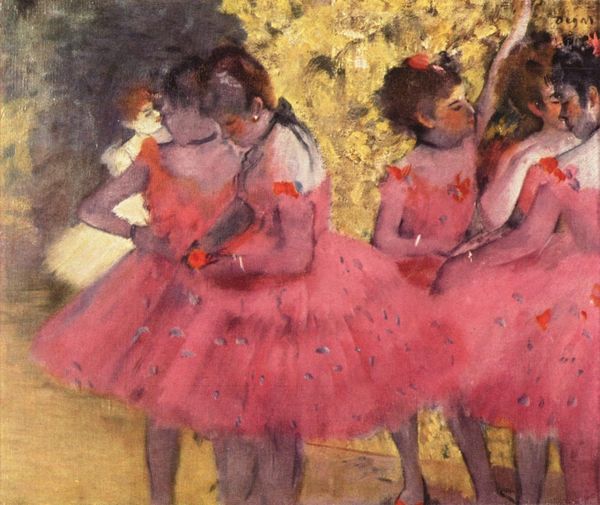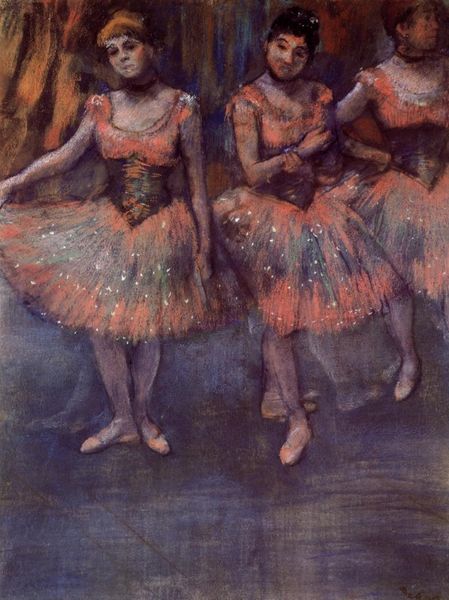
painting, oil-paint, impasto
#
portrait
#
painting
#
impressionism
#
impressionist painting style
#
oil-paint
#
figuration
#
oil painting
#
impasto
#
painterly
#
cityscape
#
genre-painting
Copyright: Public domain
Curator: Let's turn our attention to Edgar Degas' "Dancers in Foyer," painted around 1890, rendered in oil. Editor: It feels immediately dreamlike. There’s a softness, an ethereal quality, to the way the figures blend into the hazy background. Curator: Notice how Degas uses impasto techniques to give texture to the ballerinas' tutus and the surrounding architecture. The strokes are quick, almost impressionistic, lending dynamism to the scene. The architectural details – the vertical columns framing the composition, creating a visual rhythm that almost mimics the dancer's poses, seem deliberately obscured and almost unfinished. Editor: The framing immediately makes me think of surveillance. Wealthy male patrons, obscured in shadows beyond the proscenium, bought access and proximity to young women whose bodies were on display and subjected to grueling discipline. Degas wasn't simply observing beauty; he captured a system, a transactional exchange of power. Curator: Your point resonates, especially given Degas’ formal construction. Consider the positioning of the dancers—the use of asymmetry throws off conventional notions of beauty while creating a dynamic sense of depth. Degas often cropped his subjects, giving us a mere snapshot rather than a full scene, reinforcing the feeling that we're intruding. Editor: Intruding perhaps on an intimate, and likely exploitative, moment. The beauty, then, exists alongside the disquieting reality of 19th-century Parisian ballet culture. Those blurred features speak to the exploitation of working-class girls. Ballet became one of the limited avenues to elevate oneself beyond these confines, yet it still positioned young dancers in perilously visible circumstances. Curator: It is an artwork filled with such complexity. Editor: It asks that we look beneath its shimmering surface, even now.
Comments
No comments
Be the first to comment and join the conversation on the ultimate creative platform.
